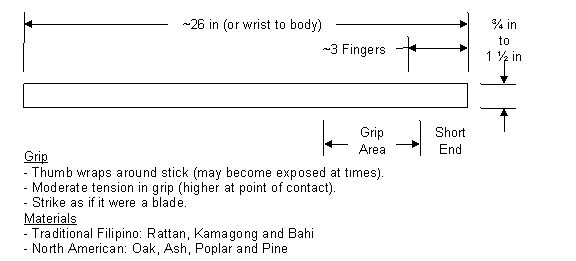
 |
AMERICAN KANG DUK WON KARATE |
Brief History
The Filipino stick, sword and knife fighting arts are commonly referred to as Arnis. The origins of Arnis are difficult to trace because of the geography of the Philippine islands and the diversity of races that settled in this area. There are over 7,000 islands inhabited by the descendents of people from India, China and Southeast Asia. In all of these countries there exists some form of fighting with sharp swords, daggers and hardened sticks. Kali is a more generic term that refers to stick fighting from all of these areas.
While invading the Philippines, Spanish armies named the native stick fighting style Escrima (or skirmish) after they were nearly overwhelmed by the native fighters. They were able to finally subdue the islands after utilizing muskets instead of bladed weapons against the native defenders. Fearing its effectiveness, this fighting style was banned by the occupying Spanish forces. However, the techniques were preserved secretly in the form of dances and mock battles staged in plays called moromoro. The name Arnis evolved from the armor (or arnes) worn by the actors playing the parts of Spanish soldiers in the plays. Arnis incorporates three forms of fighting: espada y daga (short sword and dagger), solo baston (single stick) and sinawali (to weave).
Anatomy of the Weapon

Warm-Up
Basic Kang Duk Won stretching plus:
· Wrist bends
· Wrist Twists
· Arms Across Front
· Stick Rotations
· Twirls
· Weaves (Simultaneous and Following)
Ready Position
For Right Side Stance (reverse for Left):
· Feet shoulder width apart and pivoted 45Ί clockwise at balls of feet.
· Body angled slightly clockwise.
· Right stick horizontal above right shoulder.
· Left stick horizontal under right arm.
· Eyes to the front.
12 Striking Zones

#1 Forehand Strike to Head
#2 Backhand Strike to Head
#3 Forehand Strike to Body
#4 Backhand Strike to Body
#5 Thrust to Solar Plexus
#6 Overhand Thrust to Chest
#7 Backhand Thrust to Chest
#8 Backhand Strike to Knee
#9 Forehand Strike to Knee
#10 Forehand Thrust to Face
#11 Backhand Thrust to Face
#12 Overhand Strike to Head
Sinawali and Redonda
Single Sinawali
2 counts each side
From the right side: Right High Forehand Strike (left stick under right arm) Right Low Backhand Strike (left stick above left shoulder)
From the left side: Left High Forehand Strike (right stick under left arm) Left Low Backhand Strike (right stick above right shoulder)
Double Sinawali
3 counts each side
From the right side: Right High Forehand Strike (left stick under right arm) Left Low Backhand Strike (right stick above left shoulder) Right High Backhand Strike (left stick above left shoulder)
From the left side: Left High Forehand Strike (right stick under left arm) Right Low Backhand Strike (left stick above right shoulder) Left High Backhand Strike (right stick above right shoulder)
Reverse Sinawali
3 counts each side
From the right side: Right Low Forehand Strike (left stick under right arm) Left Low Backhand Strike (right stick above left shoulder) Right Low Backhand Strike (left stick above left shoulder)
From the left side: Left Low Forehand Strike (right stick under left arm) Right Low Backhand Strike (left stick above right shoulder) Left Low Backhand Strike (right stick above right shoulder)
Redonda
3 counts each side
From the right side: Right Downward Forehand Strike (left stick under right arm) Left Downward Backhand Strike (right stick over left shoulder) Right Downward Backhand Strike (left stick above left shoulder)
From the left Side: Left Downward Forehand Strike (right stick under left arm) Right Downward Backhand Strike (left stick over right shoulder) Left Downward Backhand Strike (right stick above right shoulder)
Bibliography
Modern Arnis The Filipino Art of Stick Fighting by Remy Presas, 1983 Ohara Publications
Filipino Martial Arts Cabales Serrada Escrima by Mark V. Wiley, 1994 Charles E. Tuttle Company
Return to Black Belt Training Articles
